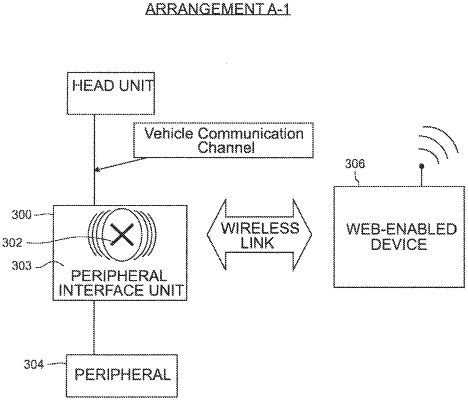| CPC H04L 69/08 (2013.01) [H04L 12/66 (2013.01); H04L 67/12 (2013.01); H04L 69/18 (2013.01); H04L 69/22 (2013.01); H04L 69/24 (2013.01)] | 24 Claims |

|
1. A system for communicating with at least one device or at least one sensor in a vehicle, the system comprising:
a programmable interface configured to bridge incompatibility of a radio head unit configured to communicate using a first communication protocol and a peripheral device configured to communicate using a second communication protocol incompatible with the first communication protocol and allow the radio head unit to control the peripheral device using a vehicle communication system, the programmable interface comprising:
a first communication port for communicating with the radio head unit;
a second communication port for communicating with the peripheral device; and
a third communication port for communicating with a mobile device outside the vehicle or not installed in the vehicle;
wherein the programmable interface is configured to bridge the incompatibility by:
identifying the first communication protocol used by the radio head unit,
identifying the second communication protocol used by the peripheral device,
detecting a presence of the mobile device,
in response to detecting the presence of the mobile device, via the mobile device, wirelessly accessing a remote network external to the vehicle,
obtaining a communication configuration ID stored on a database accessible via the remote network, the configuration ID identifying a target information exchange protocol executable to bridge the incompatibility between the first communication protocol and the second communication protocol, and
utilizing the identified target information exchange protocol to bridge the incompatibility between the first communication protocol and the second communication protocol.
|